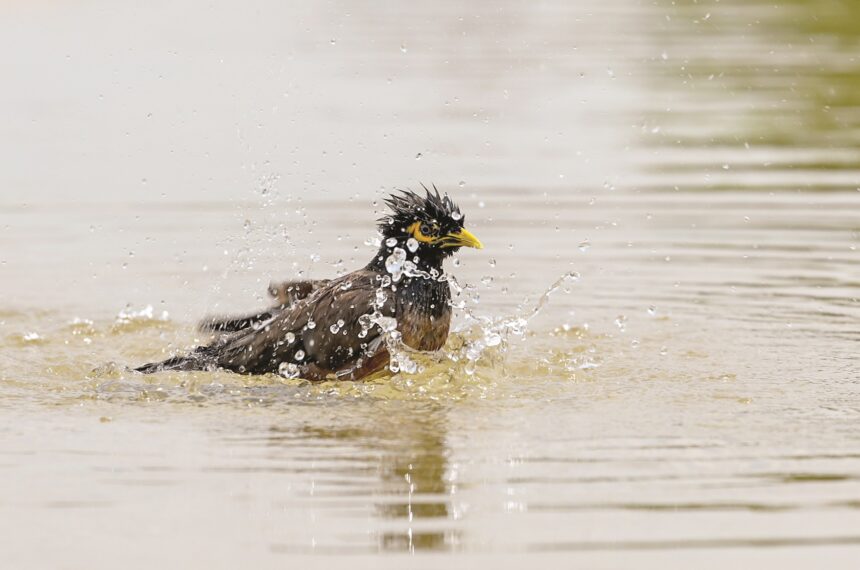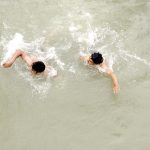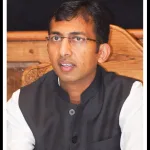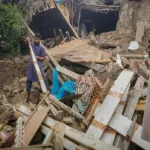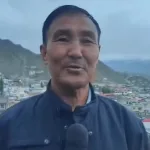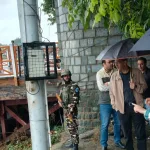Srinagar, May 21: The Meteorological Department on Wednesday forecasted intense heatwave conditions in Jammu and Kashmir till May 27 and advised people to take precautionary measures, avoid prolonged exposure to heat during the peak hours.
Director MeT, Dr. Mukhtar Ahmad, told Rising Kashmir that both Jammu and Kashmir regions are expected to witness an intense spell of dry and hot weather
during the next 6-7 days, with scattered heatwave conditions especially in the Kashmir valley.
“From May 22 to 26 is likely to remain “generally hot and dry” across the region, with only a brief spell of light rain expected at isolated locations, mainly during late afternoons,”
” The situation is likely to persist into the next week as well. For the period May 27 to 31, the weather will continue to remain hot and dry, with a possibility of light rain or thundershowers at scattered places,” he said.
Dr. Mukhtar also said that isolated thunder and gusty winds during the late afternoon hours cannot be ruled out.
Meanwhile, the MeT Department has issued a specific advisory in view of the rising temperatures. A rise in maximum temperature by 1-2°C is expected across Kashmir Division till May 23, raising the possibility of heatwave conditions at scattered places.
It said that in Jammu Division, maximum temperatures are likely to rise by 2-3°C till May 26, increasing the chances of widespread heatwave occurrences.
“There is also a possibility of thunder and gusty winds at isolated locations, especially during late afternoons, over the next several days. People have been advised to take precautionary measures and avoid prolonged exposure to heat during the peak hours of the day,” it said.
Meanwhile, Srinagar registered a high of 32.0°C, which is 6.6°C above normal, while the minimum was 16.0°C. Relative humidity stood at 50% in the morning and dropped to 28% by evening.
Qazigund was among the hottest places in Kashmir, touching 33.2°C, which is 8.6°C above normal, with a minimum of 12.0°C. Pahalgam in south Kashmir usually known for its moderate temperatures, recorded a maximum of 25.8°C, which was 3.6°C above normal, and a minimum of 8.7°C. Relative humidity in Pahalgam rose sharply from 65% in the morning to 88% in the evening.
Kupwara saw a maximum of 30.0°C, which is 3.7°C above normal, and a minimum of 12.8°C. Morning humidity was 69%, which declined to 42% by evening.
In Kokernag, the mercury surged to 31.5°C, a sharp 7.4°C above normal, while the minimum stood at 14.4°C. Humidity levels ranged between 44% and 27%. Gulmarg, the famed ski resort, also recorded an unusual rise with a maximum of 23.2°C, 6.6°C above normal, and a minimum of 11.5°C. The humidity levels there ranged from 68% to 42%.
In Jammu Division, extreme temperatures were recorded across multiple towns. Jammu city recorded a scorching 41.4°C, which is 3.0°C above normal, with a minimum of 28.0°C. Morning and evening humidity stood at 45% and 39%, respectively.
Banihal recorded a high of 30.4°C, 3.5°C above normal, and a minimum of 13.9°C. Batote recorded 30.1°C as maximum (3.0°C above normal) and a minimum of 18.6°C.
Katra, the base camp of Vaishno Devi shrine, experienced a maximum temperature of 36.8°C, which was 1.5°C above normal, and a minimum of 25.4°C. Humidity levels were 52% in the and 48% in the evening.
Bhaderwah in Doda district, recorded a maximum of 31.3°C, 3.1°C above normal, and a minimum of 15.6°C. The humidity increased from 55% in the morning to 69% by evening.
In view of the forecast, the MeT Department has urged residents to take necessary precautions to avoid heat-related illnesses. Citizens, especially the elderly and children, are advised to stay hydrated, avoid direct exposure to sunlight during peak hours, and limit outdoor activities in the afternoon.
Many villages in the plains area of Jammu are facing a severe drinking water crisis as temperatures soar amid an intense heatwave sweeping the region.
With no reliable access to clean and safe water, residents are struggling to meet their daily needs, adding to the hardships caused by the scorching heat.
One of the worst-hit areas is Kaner Dhand, a remote hilly village in the Sumb block of Samba district. The village is grappling with a deepening water shortage as natural sources dry up and no piped water supply is available. With daytime temperatures hovering around 43°C, the already scarce water is becoming even harder to find.
Villagers in Kaner Dhand are forced to rely on unsafe water from shrinking springs, known locally as bablis, and nearby rivers. Many have to walk long distances over difficult terrain just to collect muddy water for drinking and household use.
“Carrying water in this heat is torturous, but we have no other option,” said Meena Devi, a local resident.
“The river water is not safe, and the babli is shrinking every day because of the scorching sun.”
Children and elderly people are especially at risk due to the lack of safe drinking water. Local health workers have reported several cases of dehydration and heat-related illnesses in the past week.
Another local Vikas Kumar said that they have submitted written requests to the authorities, but nothing has been done.
The people of Kaner Dhand are suffering because they live in a remote area,” he added.
Following this intense heatwave In Jammu divison, water crisis has also hit the areas , including parts of Samba, Kathua, and Rajouri.
They demanded urgent government intervention to build permanent water supply lines, storage tanks, and ensure safe drinking water for all.


